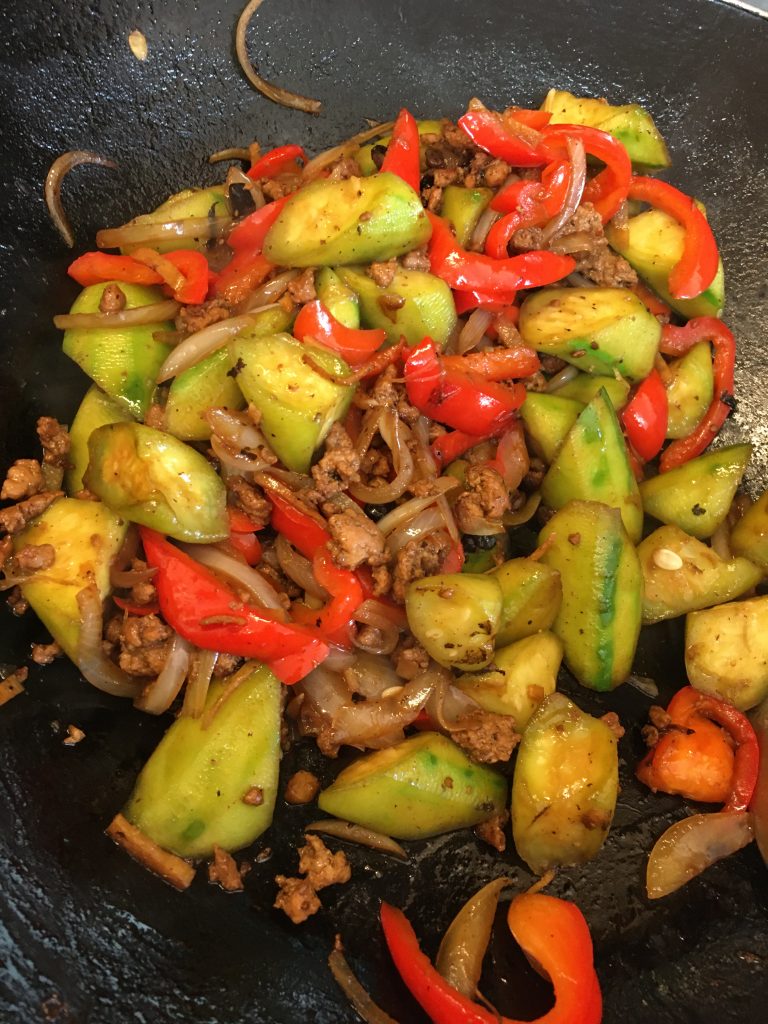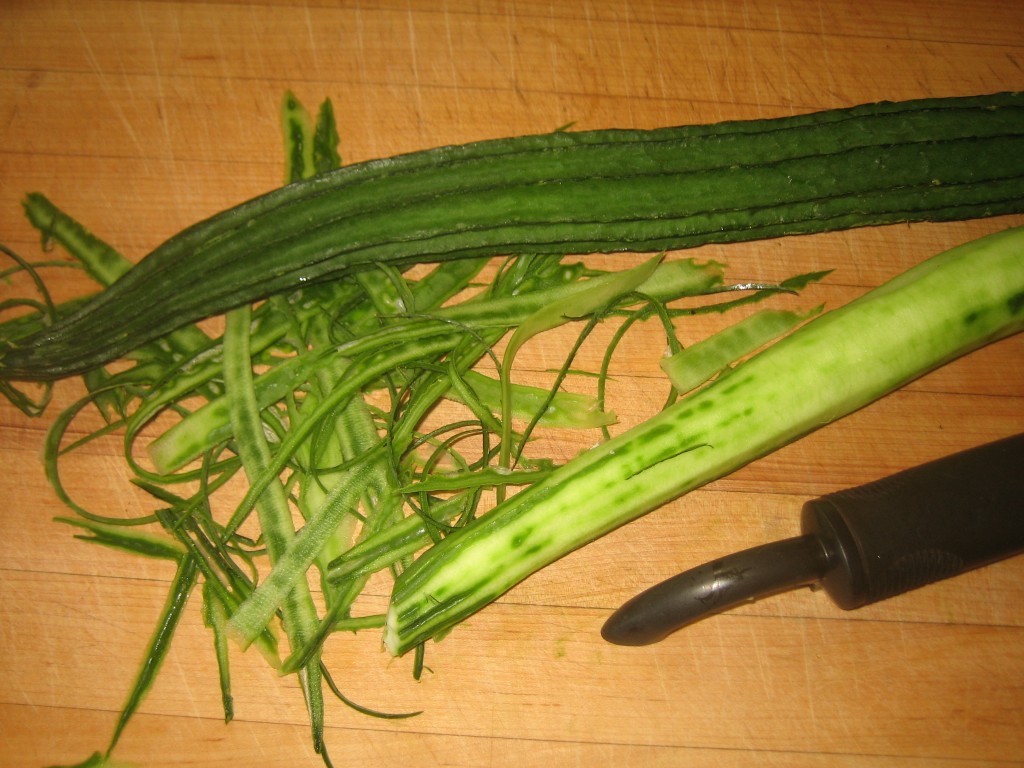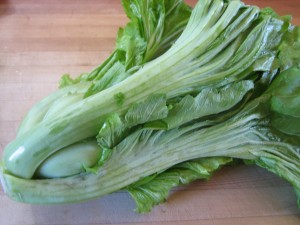
I buy most of my Asian vegetables at my local farmers’ market. The produce is so fresh that if I don’t get around to cooking everything I bought, veggies are often still good the following week. Farmers bring an ever-changing seasonal selection of Asian veggies, greens, and herbs that tease me to try something new. My purchases often show up on the dinner table as a quick weeknight stir-fry.
Last week I bought see qwa or angled loofah squash. Loofah squash (aka si gua, angled loofah, silk squash, Chinese okra) is long and slender with a rough dull green skin. Protruding ridges run down the length of the squash. Inside, the flesh is white and soft. When cooked, the squash turns silky soft, slightly sweet, and tastes delicately refreshing.

Last night I decided to stir-fry the squash with what I had on hand: ground pork, red bell pepper, and onion. I peeled the squash then cut it into bite-sized chunks. I thinly sliced the red pepper and onion. To season the mild squash, I finely chopped lots of fresh ginger and some garlic.
In an ad-lib weeknight creation, I stir-fried the ground pork with the ginger and garlic. Then stirred in a spoonful of fermented black beans, onion, and the red bell pepper. I cooked them briefly then added the squash and stir-fried for a few minutes until the squash softened slightly but still held its shape. While stir-frying, I added a couple tablespoons of Chinese rice wine (shaoxing), and soy sauce and salt to taste. In minutes, dinner was ready. Delicious and easy. For another recipe, see this previous post.

